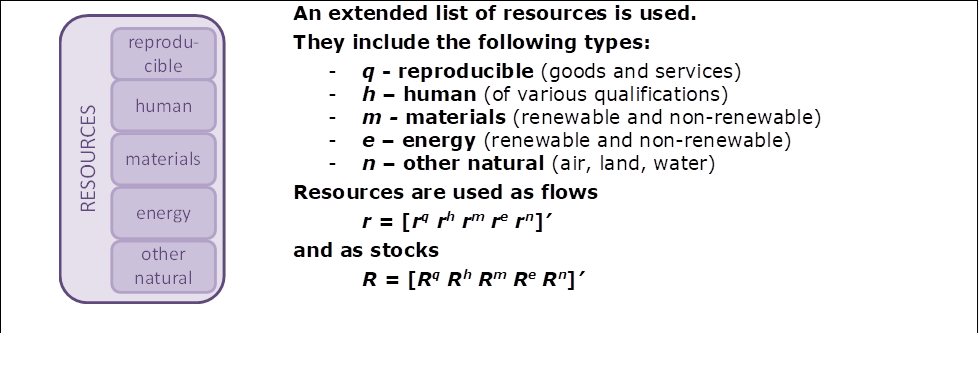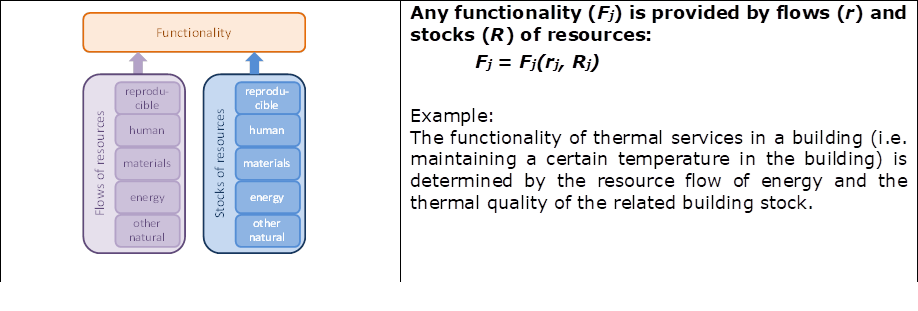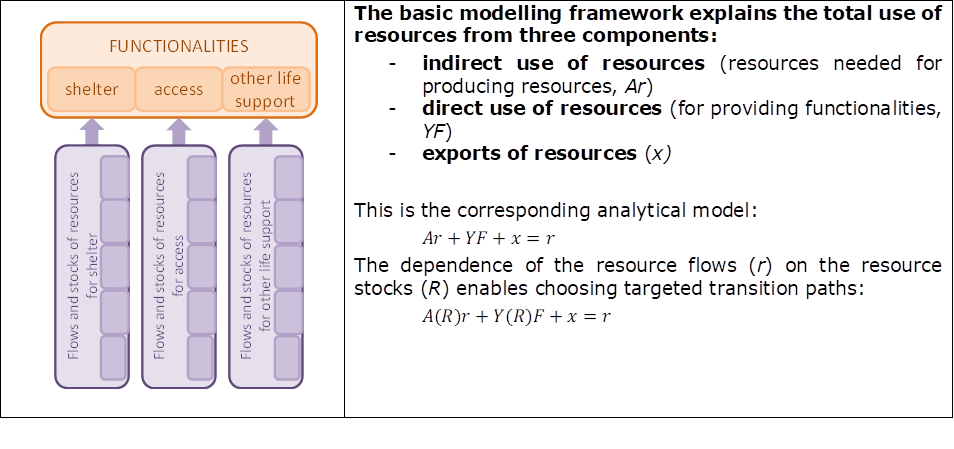EconTrans in a nutshell
EconTrans offers an integrated perspective to address interlinked challenges: rapid GHG emission reduction, achieving the Sustainable Development Goals, and coping with fundamental transformations triggered by breakthrough technologies, from plus-energy buildings to self-driving electric cars. Enlarging the scope of conventional analysis by rethinking the indicators of well-being, extending the scope of resources and deepening the understanding of how well-being relates to planetary boundaries allow to derive recommendations for targeted policies.
The EconTrans modeling approach:
Deepened structural modeling for analyzing long-term economic transitions
1. Functionalities, as shelter, access and other life support describe the purpose of economic activities

2. The list of resources is extended beyond conventional approaches

3. For providing the desired functionalities, the interaction between the stocks and flows of resources is considered

4. The basic modeling framework according to “Deepened structural modeling”

5. The basic model is extended by additional hypotheses
- Interactions,
e.g. how functionalities respond to income of households - Price formations,
e.g. by reflecting the scarcity of resources - Distributional impacts,
e.g. by checking the impact of the distribution of stocks of resources
EconTrans
Exploring long-term economic transitions
Exploring long-term economic transitions
On the web
Learn more about the EconTrans project


